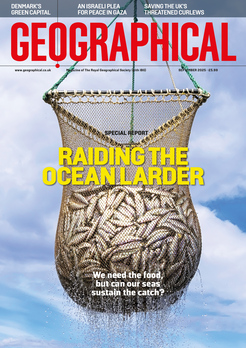
Mark Eveleigh takes on one of the little-known and most beautiful routes of Spain’s Camino walks – the Camino del Invierno or Winter Way
By Mark Eveleigh
The Camino walks in Spain are world-renowned. For more than 1,000 years, pilgrims have been walking a network of routes to the shrine of St James in Santiago de Compostela, in the northwestern tip of Spain. Today, more than 400,000 people a year complete the challenge – some for religious reasons, many for the physical delight of the stunning, rugged terrain, others for the camaraderie found on one of Europe’s great walks. Most routes start in France, others in Portugal or Andalucia in southern Spain.
Our descent down a craggy mountainside to the Río Minho seemed like a fitting time for silent contemplation. It wasn’t just that the steepness of the slippery 1,500-year-old Roman flagstones, gouged by centuries of iron cartwheels, demanded concentration. It wasn’t even for the fact that we were protecting our mouths and noses from the dust with our buffs – known in Spanish slang as bragas cuello (neck knickers).
Enjoying this article? Check out our related reads:
Galicia’s Minho valley was once believed to be the domain of a whole host of wicked spirits and only the foolhardy raised their voices here. Local legend has it that boatmen on the Río Minho used to carry pebbles in their mouths to remind them not to talk and so awaken the feiticeiras, diabolically beautiful sirens who were forever on the alert for wayfarers who could be lured to death by drowning.

My wife Narina and I were almost halfway through our two-week hike along a rarely trodden section of Spain’s Camino de Santiago pilgrim trail. The path we were trekking was known since the Middle Ages as the Camino del Invierno (the ‘Winter Way’).
Stretching 265 kilometres from Ponferrada, in Castilla y León, to Santiago de Compostela in Galicia, the Winter Way was traditionally an alternative to the Galician peaks that were often snowbound during the winter months. I’d walked the Camino Francés (French Way), over those peaks, during the summer months and knew from bitter experience that, even at that time, icy highland fog could descend rapidly.
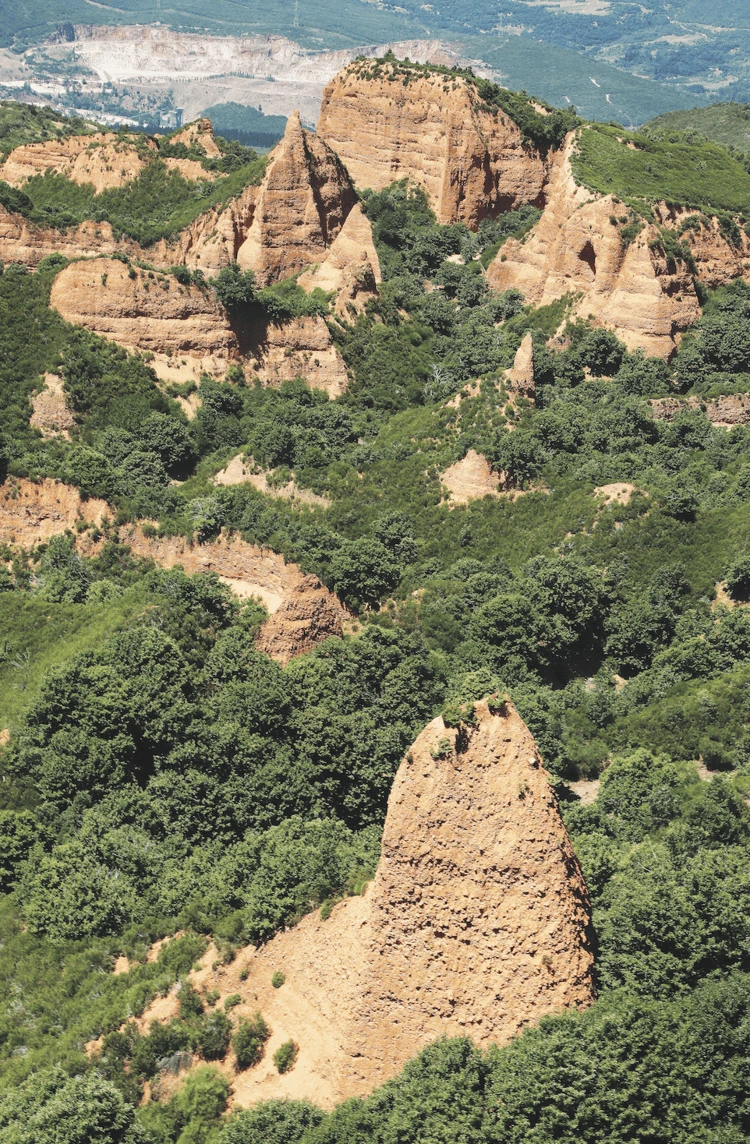
So we’d decided to embark on our Winter Way walk on Midsummer’s Morning. The Winter Way makes for wonderfully appealing walking at almost any season, yet it was only in 2016 that its cultural importance was recognised and it was incorporated into the growing list of official trails that lead to the hallowed city of Santiago de Compostela. Well over 200,000 pilgrims set out each year on the world-famous Camino Francés (known as the ‘French Way’ because it runs from Saint-Jean- Pied-de-Port in the French Pyrenees) yet very few, even among dedicated Camino connoisseurs, have even heard of the beautifully pristine Winter Way.
On the road
The route begins in fairytale style, below the battlements of Ponferrada’s 800-year-old Knights Templar castle. Narina and I worked our way against the human tide following the yellow arrows that marked the route of the French Way and took the road less travelled into the valley of the Río Sil.
I’d first heard of the Winter Way two years before when, at the ripe old age of 54, I’d undertaken a 1,223-kilometre trek from Gibraltar to Estaca de Bares (the northernmost tip of the Iberian Peninsula). That hike became the subject of a travel book that I’d called Vagabond because – at least until the dripping, moss-laden villages of Galicia convinced me of the folly of my ways – I’d shunned pensiónes and hosteles in favour of nights wild-camping in my trusty hammock.

This time, Narina and I would be travelling in a more relaxing style. We’d overnight at the chain of albergues that stretch so conveniently along most of Spain’s long-distance Camino routes.
By mid-morning on the first day, I was belatedly coming to the realisation that the Winter Way was less well- served with facilities than more famous routes. We passed through hamlets with the lordly names of Villalibre de la Jurisdicción and Priaranza del Bierzo, yet the only sounds were the staccato clatter of storks’ bills, like tiles falling from chapel roofs. We didn’t find a single cafe or bar that was open and finally, on the outskirts of Santalla del Bierzo, I stopped to ask a woman who was pruning her laurel bushes where we might find a place to eat.

Amalia García García introduced herself, then promptly ushered us through her garden gate. ‘Estáis en vuestra casa [You’re in your house],’ she said. ‘We don’t see many hikers in this village,’ Amalia added as she brewed fresh coffee and prepared bread and cheese. ‘It’s quite a novelty to meet people from different countries here.’
It was the sort of encounter that would be repeated almost every day during our walk along the Winter Way. We chatted for so long that it was early afternoon when we left Amalia’s house.

Narina and I had expected the first day’s walk to be an easy jaunt, but the climb to the hilltop community of Villavieja, our first overnight stop, was a brutal slog up a sunbaked ridge that offered jaw-dropping views along the valley. We’d heard that Villavieja had no bars, stores or hotels. There was only a single albergue, consisting of eight bunkbeds in what appeared to be a converted stone barn. With its spacious sitting room, well-equipped kitchen and hot showers, it represented unbeatable value at just €8 per person and set the tone for the sort of simple but comfortable accommodation we’d find right along the route.
Niki Davies, our first Winter Way dorm-mate, was from Harare, Zimbabwe, and there was also a seven-strong hiking group from Bilbao, with their backup driver Nacho. We cooked pasta and, with typical Spanish hospitality, Nacho uncorked an extra bottle of vino.

‘The noise and bustle of the French Way was really beginning to bother me,’ 67-year-old Niki admitted as we ate. ‘I have to admit though that, as a woman hiking alone, I’m a little anxious about the solitude and wildness of the Winter Way.’
The camaraderie of her ‘Camino family’ (to use one of the pilgrims’ stock phrases) had been a great support, she admitted, but it had left little opportunity for what Niki described as ‘me time’. Although the fast-paced Bilbao hikers would leave us in their dust very quickly, we’d cross paths with Niki frequently over the next two weeks.
‘I never had a moment’s regret taking the Winter Way,’ she’d tell us when we met on the day she arrived in Santiago. ‘I never felt nervous or threatened in any way and the fact that pilgrims were rarely seen meant that villages were doubly welcoming.’
A walk through history
We were the last to leave the albergue the next morning, and our passage out of the sleeping village was further stalled by a sighting of a snuffling hedgehog in the roadside vegetation. Then, a jabalí (wild boar) squealed as it went crashing through the stunted oaks under the bulwarks of a ruined castle on the hillside.
Castillo de Cornatel was one of many Knights Templar fortresses that were established in northern Spain in the tenth century to protect pilgrims from the bandits who haunted the once lawless hills. But this region is more famous today for military traditions that predate even the Templars by 1,000 years. The gold mine at Las Médulas (about 13 kilometres into our day’s hike) is considered the largest open- cast gold mine in the Roman empire.
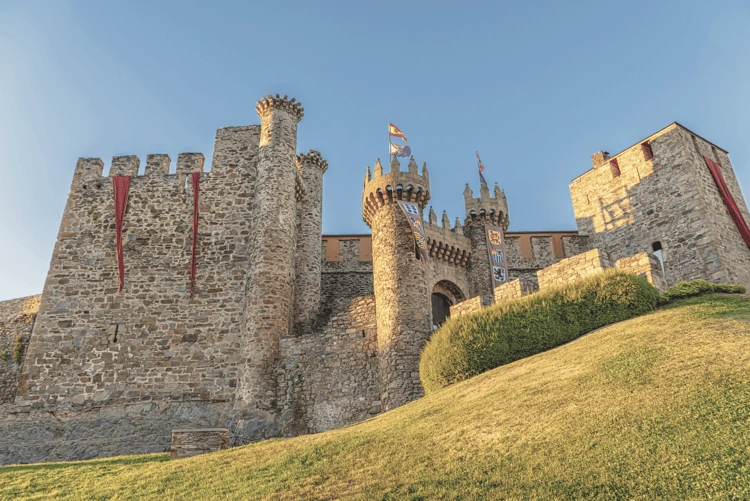
The UNESCO site is perhaps the finest example of the Roman mining process known as ruina montium (literally ‘wrecking mountains’), which involved flooding hand-dug tunnels until entire mountains could be brought crashing down to reveal the gold veins at their hearts. It was vandalism on a monumental scale and yet it was somehow disturbing to realise how this man-made devastation could, two millennia later, have resulted in a landscape of such beauty.
We slept that second night at a simple guesthouse in Puente de Domingo Flórez and the next morning crossed into Galicia. When we finally left the Sil valley, it was to climb northwards towards the iconic Torre del Homenaje (Homage Watchtower) that has protected Monforte de Lemos for 800 years.
The little city, itself built on the site of a Roman encampment, dominated what was known as the Ribeira Sacra (Sacred Riverbank). This area, where the Sil River converges with the mighty Río Minho, is said to these days boast the greatest concentration of Romanesque churches and monasteries in Galicia.
Our silent descent down to the Río Minho brought us to the village of Belasar. It was strange to walk into the riverside bar in a village we’d never even heard of and to find it full of people we knew. As we dropped our packs in the corner we were greeted by a Portuguese hiker, two young women from Menorca and an Irish veteran pilgrim.

We sipped jarras (litre glasses) of Estrella Galicia beer while Christy, the Irishman, clued us in on the unique characters of the six other Camino routes he’d walked: ‘But the Winter Way has already become my favourite,’ he enthused. ‘I love the fact that it’s almost undiscovered and that it allows you to totally immerse yourself in nature and solitude in a way that none of the other routes really do.’
We felt the same and as the final days progressed, we found ourselves irresistibly slowing our steps as if reluctant to come to the end of our road. We eked out the remaining miles like misers; taking time for leisurely picnics and enthusiastically embracing the tradition of the siesta with our double hammock tied in shady forests.
Rather than arrive in Santiago, we would very happily have retraced our steps and walked all the way back to Ponferrada. And to do so might have been the most fitting option; for a medieval pilgrim, the long-awaited arrival in Santiago de Compostela was considered to be a sort of rebirth… but also the starting point of the even more exhausting journey back home.
All roads lead to Santiago

Camino Portugués Central – 611 kilometres from Lisbon to Santiago
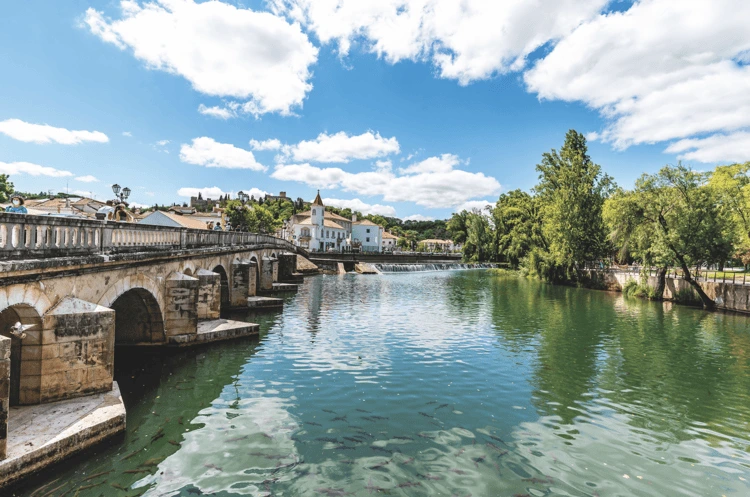
The second most popular route in terms of annual pilgrim numbers, this route begins in the Portuguese capital or further north, from Porto. It’s a bit easier on the legs, with fewer steep ascents and, from Porto onwards, it has plenty of albergues, cafés and waymarks along the way. The walk from the city of Porto to Santiago would take two weeks (a further two weeks if you start in Lisbon). Highlights include crossing the Minho River on entering Spain.
Camino del Norte – 872 kilometres from Bayonne to Santiago

A beautiful route that runs along the coastline from San Sebastian, the Basque country, Cantabria and Asturias before cutting south to converge with the French Way in Arzúa (Galicia) for the last two days to Santiago.
The coastal stretch goes past the geological Jurassic wonder of the Zumaia’s Flysch Cliffs and through major cities such as Bilbao, with its iconic Guggenheim Museum. Thirty to 35 days to walk the whole route.
Vía de la Plata – 994 kilometres from Seville to Santiago

Said to be the greatest challenge of them all, this route from Andalucia is known for its brutal summer temperatures and the great distances (frequently more than 32 kilometres) between villages. The full route would take at least 42 days.
Camino Primitivo – 372 kilometres from Oviedo to Santiago
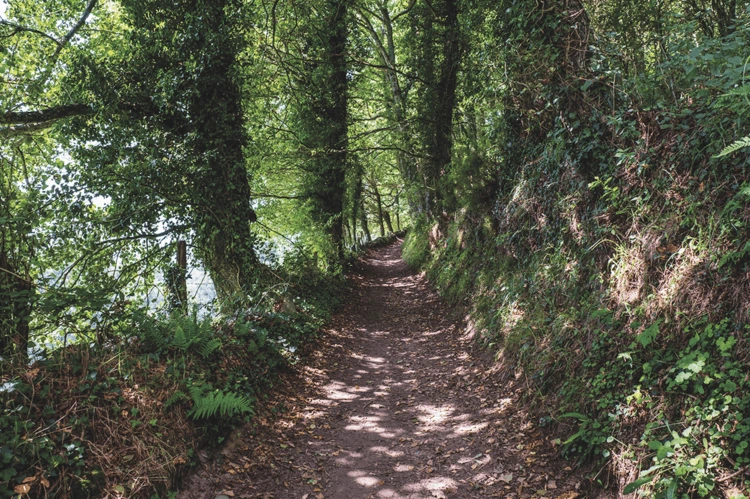
King Alfonso II of Asturias set out from Oviedo in the ninth century to investigate reports that the remains of Saint James had been discovered in what later became Santiago de Compostela. This route converges with the French Way in Melide, for the final three days to Santiago. The full route would take 12–15 days to complete.
Shorter ‘secret options’

Despite beginning in the Spanish capital, the Camino de Madrid (323 kilometres from Madrid to Sahagún) is walked by only a handful of pilgrims each year. The Camino del Sur (180 kilometres from Huelva to Zafra) combines Andalucian hills and the steppes of Extremadura while, in the extreme north, the Camino Aragonés (165 kilometres from Somport to Puente la Reina) can serve as an alternative beginning to the French Way.
The Camino Inglés (117 kilometres from Ferrol to Santiago de Compostela) is named for the English pilgrims who arrived in Galicia by boat. The baby of the bunch, Camino Lebaniego (72 kilometres from San Vicente de la Barquera to Monastery of Santo Toribio de Liébana) is unusual in that, rather than paying homage to Santiago, it brought medieval pilgrims to a monastery that is said to house the lignum crucis (a fragment of the ‘True Cross’).
Santiago de Compostela

The bustling capital of Galicia is home to the shrine of St James in the cathedral built on the site where a shepherd found the holy relics in the ninth century. The city was a stronghold against the Moors and is now a UNESCO World Heritage site.

